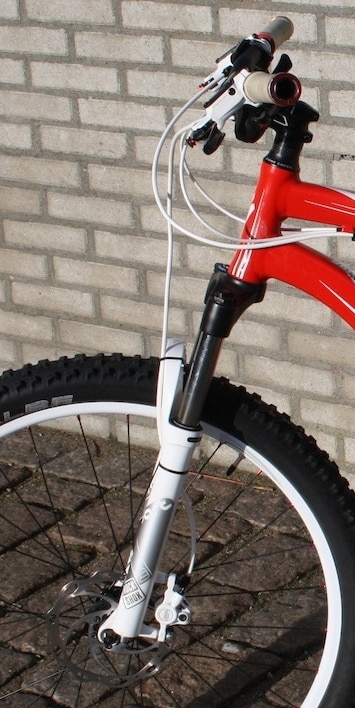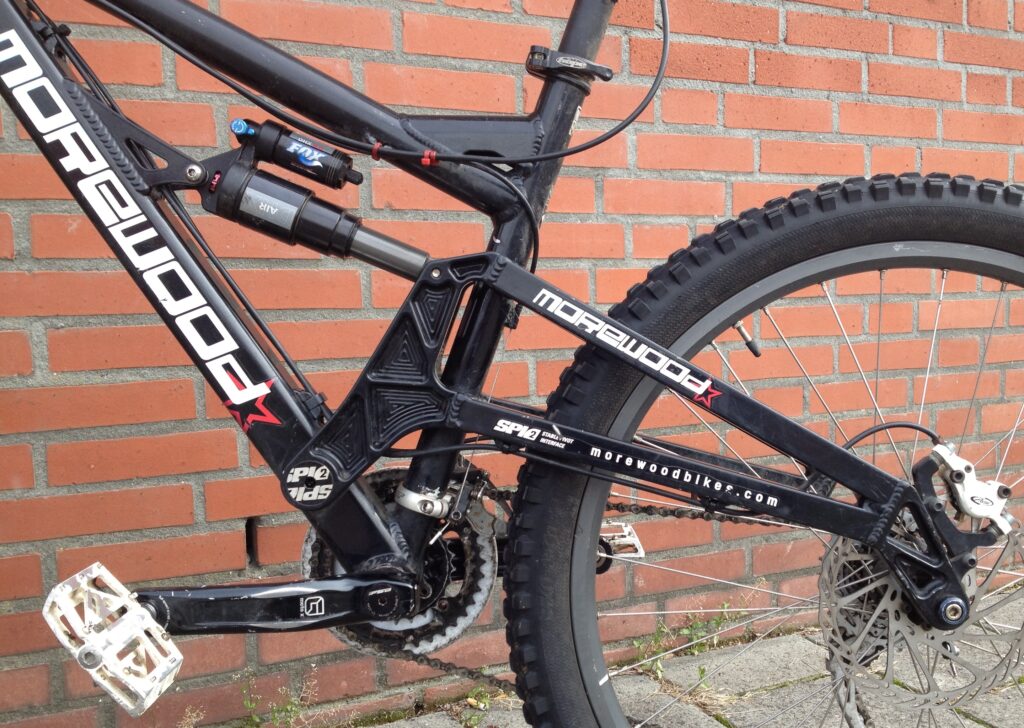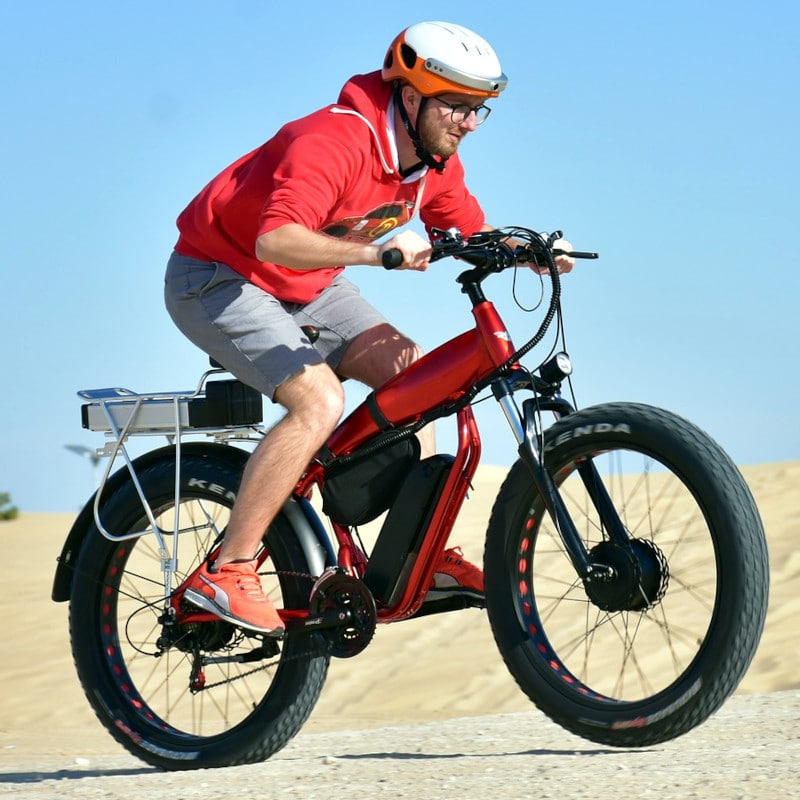When you are thinking about what type of ebike to buy, have you thought about suspension? Do you want it? Do you need it? Will cycling be more enjoyable? Will it be difficult and expensive to maintain if I go for an ebike with suspension?
Each answer to the above questions, can lead to yet more questions: what type of suspension; full suspension; half suspension. Will suspension affect the range? Will I get the same workout on a suspension ebike?
There are literally dozens of questions, options, and answers, just about suspension alone, never mind any other aspects of choosing an ebike. Hopefully we will answer a few here, and gain a little understanding of ebike suspension.
What is Electric Bike Suspension?
Suspension, basically, is a cushion between the rider and the road. It will absorb the shocks of hitting potholes or bumps on the road, or whatever terrain you are negotiating, and generally smooth your ride across uneven surfaces. Suspension mechanisms consist of coil springs and dampers, usually adjustable to more suit the rider’s requirements and the type of terrain being traversed. Suspension ebikes tend to be more expensive, and the more you pay, the more advanced the parts that make up the suspension mechanism will be.
What Are Ebike Suspension Options?
Many different types of ebike have suspension options, though it is mainly in the mountain ebike category where the options are most common, and usually most desirable. Where suspension is an option, the two main choices are full suspension, which consists of both front and rear wheels having springs and dampers, or half-suspension, sometimes referred to as ‘hardtail’ which consists of suspension on the front wheel only.
Do You Need Suspension on Your Ebike?
No suspension is totally fine if your normal ride is along paved stretches or tarmac roads. If you limit your cycling to these surfaces, then having an ebike with full or half-suspension may be needless, and in reality, be a downside as you will still have to check and maintain the suspension system even if it is, in effect, never used to its full intended purpose. A great deal of ebikes don’t have suspension because they are designed to traverse smoothly surfaced roads or paths, and this is fine if that is all you want your ebike for. A decent sprung seat and the cushion from the air in the tires will be enough to neutralize any small bumps you encounter enroute.

Do Your Ebike Routes Vary?
Of course, some people may buy an ebike, for example, to commute, therefore, an ebike with suspension may not be necessary because the route they have to their place of employment may be all roadway, or smooth cycle paths. On days off, or holiday cycling though, some riders tend to be more adventurous, they may decide to try something more suited to an ebike with suspension, something more akin to mountain ebike tracks, or rough countryside routes and gravel trails, with very little of the smoothness of their usual commuting ride. Perhaps, an ebike with suspension may be a good idea after all!
Types of Suspension
The two main types of suspension are full suspension and hardtail. Full suspension is both front and rear wheels, hardtail is suspension on the front wheel only. The greatest range of options for suspension is on mountain ebikes, though manufacturers may offer the same suspension choices on ebikes catering for different terrain usage. If you have decided that you need suspension as a requirement on your new ebike purchase, then you now have to decide whether to opt for full, or half (hardtail) suspension.
Hardtail Suspension
Ebike models that only have suspension on the front wheel are generically termed as ‘hardtails’. Being no suspension on the rear wheel, deems the back of the cycle hard, therefore, hardtail. The front wheel, which has the suspension, generally has sprung forks containing dampers. Different models and manufacturers vary the features in front suspension. Buying a hardtail ebike tends to come down to the preference of the rider, as well as budget. The more you spend, the more cosmetic and adjustment options, as well as the quality and the UpToDate technology of the parts used.
Some of the advantages of choosing a hardtail ebike, as opposed to a full suspension ebike – More affordable. Easier to maintain. Less moving parts means less to wear and tear, and less to replace when necessary. Hardtail ebikes tend to be lighter, meaning greater range. Though still heavier than an ebike without suspension. This is probably where price makes the greatest difference as an expensive ebike should be built with lightweight materials compared to budget models.

CC BY-SA 3.0
Full Suspension
If you ride over difficult terrain; mountain tracks, woodland paths, rough gravel trails, then an ebike with full suspension may be the best option for you. The additional suspension means you can more easily absorb the kinds of shocks strewn along these kinds of paths; potholes, loose rocks, water channels, and even blockages like fallen branches and smaller land-slips can be negotiated. Riding an ebike over this kind of terrain takes skill though, so if you are a novice, take your time, take it slow and learn as you go till you build up your skills. Going down a mountain track at speed can be exhilarating, but please take it easy and know your limits till you reach a level where you feel competent you know the cycle and the path you are negotiating safely enough to increase speed.
Some of the advantages of choosing a full suspension ebike; more adept at traversing rough terrain. Negotiating difficulties in your way, like rocks and potholes, are a breeze. Less physical stress and strain to the rider as the suspension absorbs much of the shocks as you go.

See also: Safety First – Check Your Brakes
And: Ebike Tires
Which Ebike Suspension is Best?
Ultimately, the choice of suspension; hardtail, full suspension, or no suspension, is down to the type of rider you are and the type of terrain you will be riding over. If all you require is an ebike to commute smooth tarmac and concrete roads and pathways, then no suspension is required. If you vary your route to involve rougher terrain, then a hardtail may be a better option. If you plan on going off-road, and hitting mountain tracks and countryside trails on holidays or days off, then perhaps you need an ebike with full suspension.
As well as considering the type of terrain you will be traversing, you may also wish to consider the extra costs involved, firstly in purchasing your ebike, and also with the ongoing costs of maintaining and servicing your ebike. These extra costs for hardtail and full suspension ebikes may not be prohibitive, but if you are on a tight budget, they are worth putting into the running cost equation.
If you are an advanced rider with many years of experience, you will probably already know what type of ebike and suspension you require. The knowledge you have accumulated over time will make such a choice a simple easy decision. This article is more aimed at the novice, so I hope to have given the new ebike rider some pointers to consider as they make their choice. There is much more information out there though, so if you are finding the choice tough to make, then seek out more knowledge, talk to cyclists, ask advice at your local bike shop. Buying an ebike can be an expensive business and you want your hard-earned money to be well spent on something that will give you pleasure, and above all, do all you require it to do, for a long time.

